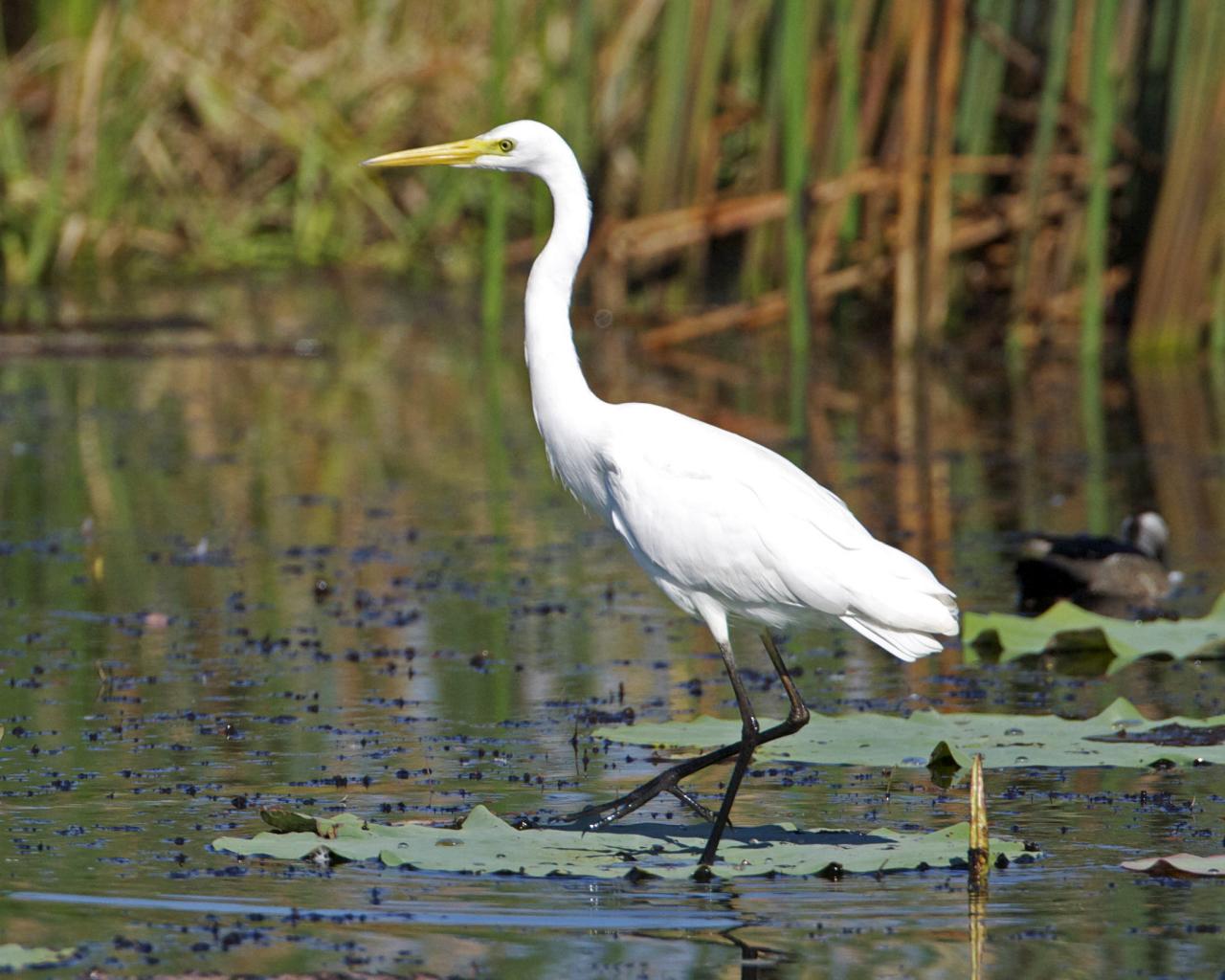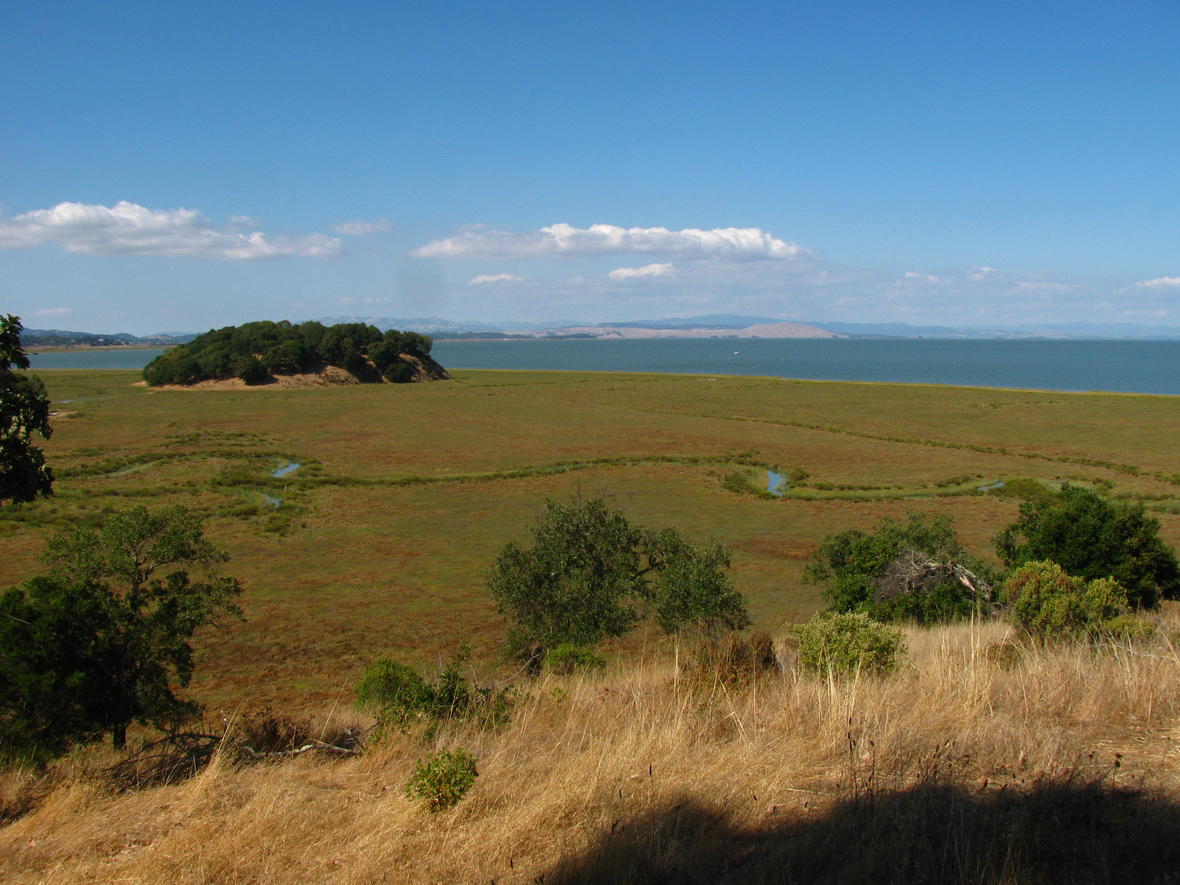Sea-level rise is putting our marshes at risk
The effects of a higher sea level will ripple through entire ecosystems
Photo by Mathew Schwartz on Unsplash.
Marshes are filled and emptied daily by tidal cycles. Birds scour for food in the mudflats at low tide. During high tide, the creek beds are flooded with sediment and nutrients. When the sun, moon, and Earth are nearly in alignment, the sea reaches farther up the land, saturating the dry, high marsh with saltwater.
Sea level is expected to rise in San Francisco Bay 1 to 3 feet by the year 2100. Marshes would protect the area, which once had over 200,000 hectares of tidal marsh. That is, until 90% of this land was either filled in so that it could be developed or was isolated from the ocean by seawalls. Development has left the city of San Francisco vulnerable to flooding from storms and created smaller, isolated areas of marsh. This threatens wildlife by making it difficult for animals to move throughout their natural ranges, and habitat loss can also change the population and distribution of predator species.
A portion of developed San Francisco tidal marshes are being restored, while the remaining habitats are being protected. A number of organizations, including the United States Geological Survey (USGS), are working on this effort with the goal of safeguarding coastal communities from sea-level rise and protecting threatened wildlife species.
Loss of habitat changes how species interact with each other, and sea-level rise will likely intensify these effects in coastal areas. A team of researchers with the USGS in San Francisco wanted to know how sea-level rise would affect predator-prey relationships on tidal marshes. They used the regular flooding of marshes by the tides to understand how a rising sea might affect interactions between wildlife species.
Using binoculars and spotting scopes, the USGS team observed individual birds, like northern harriers and great egrets, at four tidal marsh locations in San Francisco Bay. Surveys were conducted between September and January. During this time of year, the angle of the sun compared to the Earth increases, causing a larger tidal range and consequently a higher high tide. This mirrored predicted sea-level rise in the Bay.
The team compared the number of strikes the birds made on prey species during high and low tide. A strike was considered to be successful if the observed bird had captured prey. They found that there were more predatory birds attacking more prey when the tide was high compared to when it was low.

A great egret, one of the birds observed in the USGS study, wading in a marsh
Such an increase in predation could affect threatened and endangered prey. A previous study found that the primary cause of death in the endangered Ridgeway's rail, a chicken-shaped bird that prefers walking to flying, was predation, and that predation on rails increased during high tide. The results from the USGS study support these findings and highlight that an increase in predation isn't just a temporary management concern; rather, it will be an ongoing issue as sea level rises.
Changes in ecological interactions will also impact the biogeochemical processes that make tidal marshes function as ecosystems. Ribbed mussels, for example, stabilize marsh sediment by attaching themselves to the base of marsh grasses and depositing sediment and nutrients through their fecal matter. This has been shown to increase the productivity and stability of cordgrass and prevent erosion at the marsh edge. If more ribbed mussels are eaten by birds, we could see more erosion from storm surges in the absence of mussels. It is also possible that a decrease in mussels and sediment deposition could impact a tidal marsh's ability to retreat inland as sea level rises.
There's an economic angle as well. Tidal marshes increase the survival of swimming aquatic species, such as blue crabs and shrimp. While survival depends on various factors, such as vegetation and where the marsh is geographically located, this finding suggests that marshes have the capacity to serve as nursery habitats. That is, they increase the survival of juvenile fish and crustaceans compared to other habitats. The gag grouper, a fish commercially and recreationally caught in the Western Atlantic Ocean, is one species that benefits from the protection of tidal marshes during the early stages of life. An increase in predation on juvenile aquatic species in tidal marshes could disproportionately impact the populations of commercially important fishery species, like the gag grouper.

China Camp Tidal Marsh in San Francisco
Tidal marshes offer us great value, from storing carbon in their soil to protecting our cities from flooding. There is much to be optimistic about concerning these adaptive ecosystems. However, the results from this study highlight the compounding effect that climate change, habitat fragmentation, and urban development will have on marsh habitats — and how changes in ecological interactions can have cascading effects throughout an ecosystem.
Peer Commentary
Feedback and follow-up from other members of our community
Vivian Su
Biology
University of Southern California
Your article discussed one of the many specific impacts of global warming and land development on the environment. As a resident of the San Francisco Bay Area myself, I have admired the beauty of tidal marshes and observed the many different species that call it home while driving on the freeway. I think that we often underestimate the importance of small habitats, and how easily the environmental balance can be destroyed. On this Earth, every species is interdependent, and our livelihoods depend on the survival of plants and animals as well.
Because your article is based on the projected sea-level rise, I think that the cause for this rise could be further explored. What exactly is causing the sea-level to rise, and how might we combat this? In addition, you stated that marshes “increase the survival of juvenile fish and crustaceans compared to other habitats.” Is there a specific research study that compared the survival of these species in different habitats? What are some specific characteristics of marshes that enable survival?
Thanks for sharing this piece!
Thank you for your comment, Vivian. Sea-level will rise as a result of ice melting and thermal expansion — as the oceans warm, water will expand. But we also know that sea-level rise will differ regionally with many factors contributing to these differences, such as erosion. I agree that it is crucial to understand these factors to better respond and adapt to climate change.
To be considered a nursery, the habitat in question has to increase the survival and growth of juveniles. There are studies that have looked at how a specific species, such as the gag grouper mentioned in the article, benefit from nursery habitats. Meta-analysis studies have shown that nursery habitats aren’t one-size-fits-all. Outcomes differ regionally and there are other ecosystems that serve as nursery habitats, such as mangroves and seagrass beds, to varying degrees. Some factors that have been identified as contributing to the nursery value of marshes are salinity, tidal range, and temperature. Identifying nursery habitats can help us prioritize what areas need to be restored and protected regionally. But, in my opinion, it is only one small piece of the puzzle!